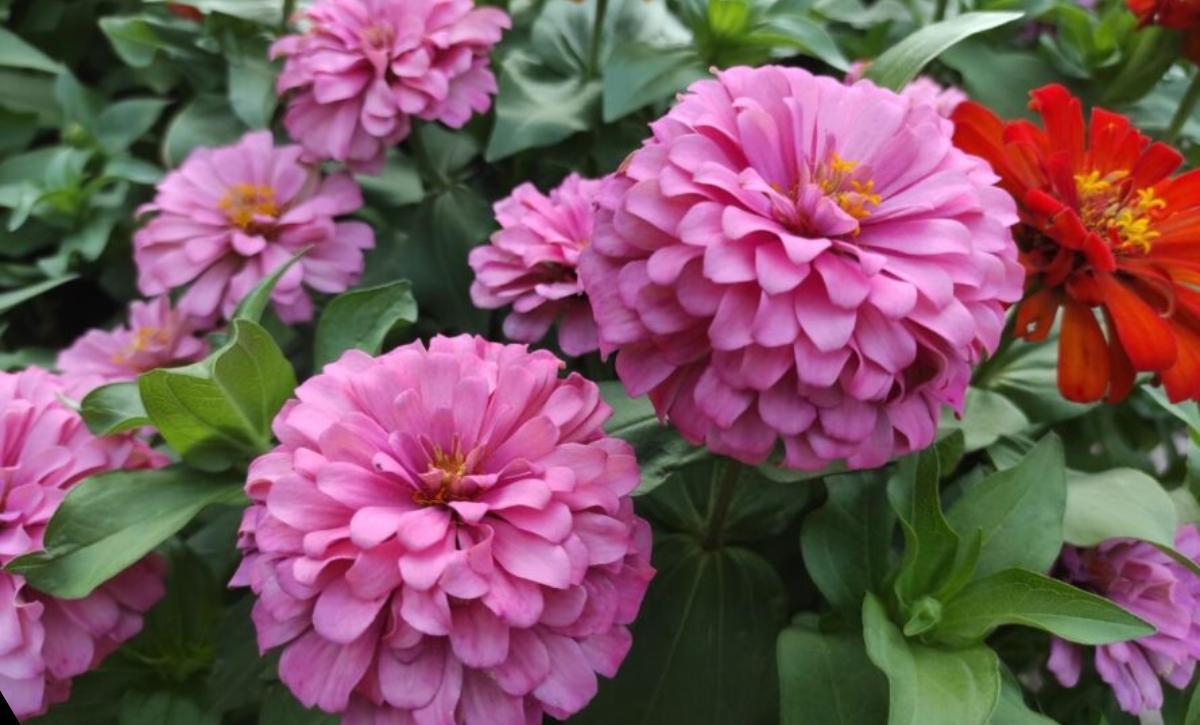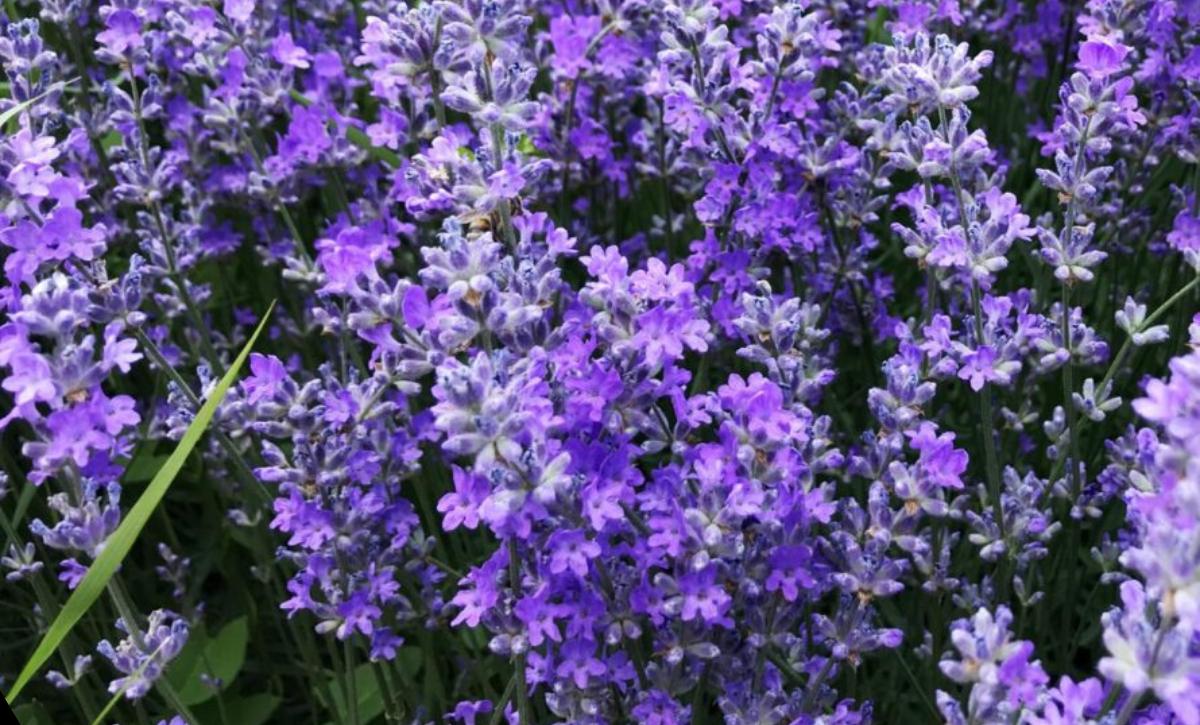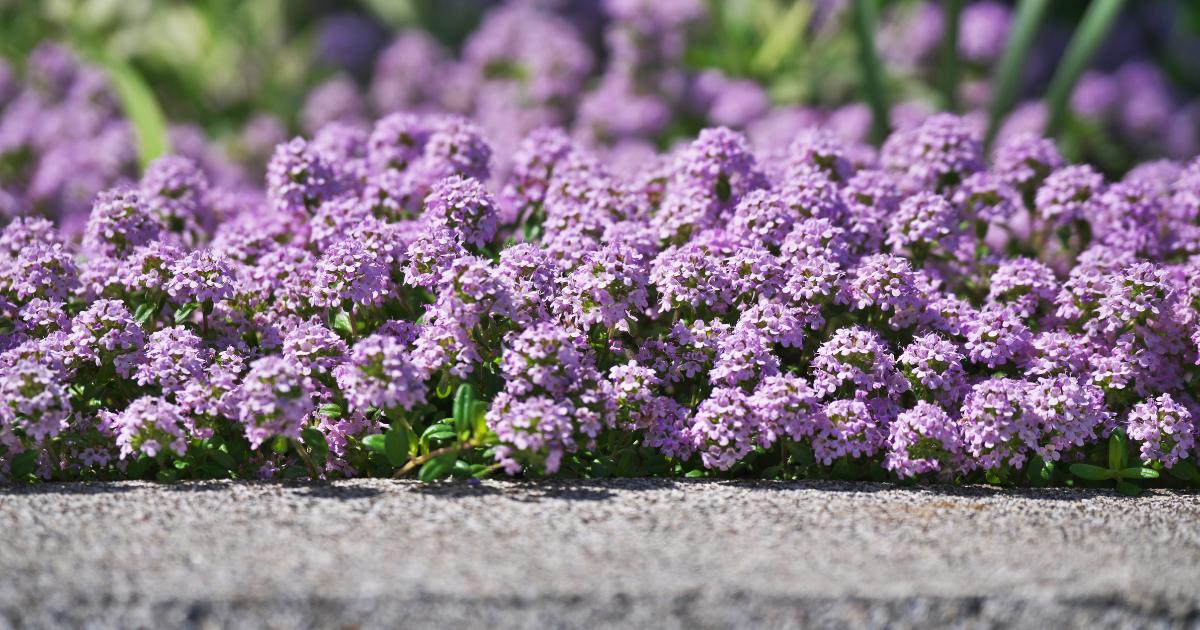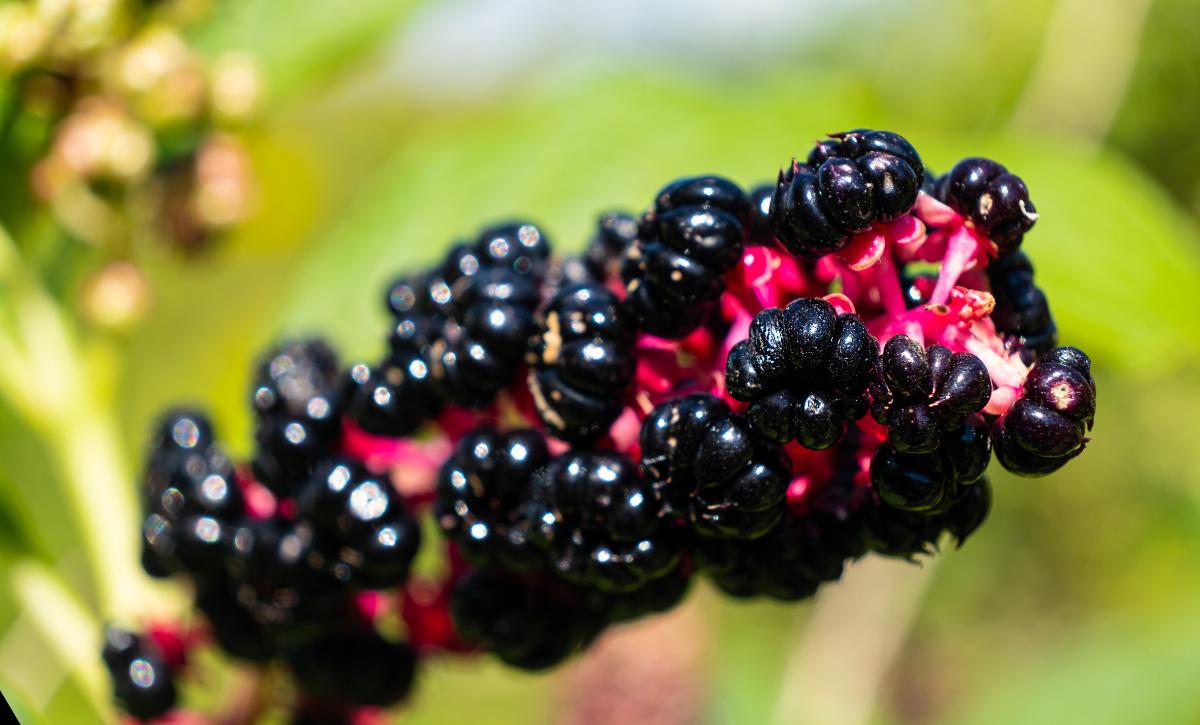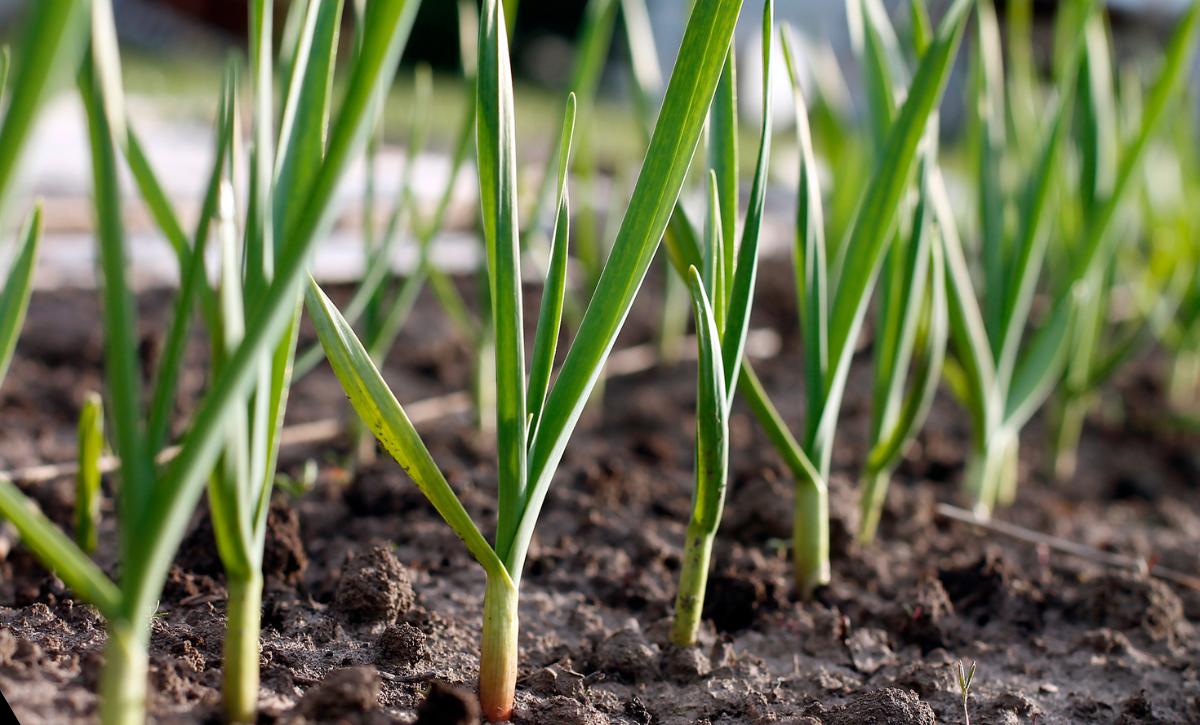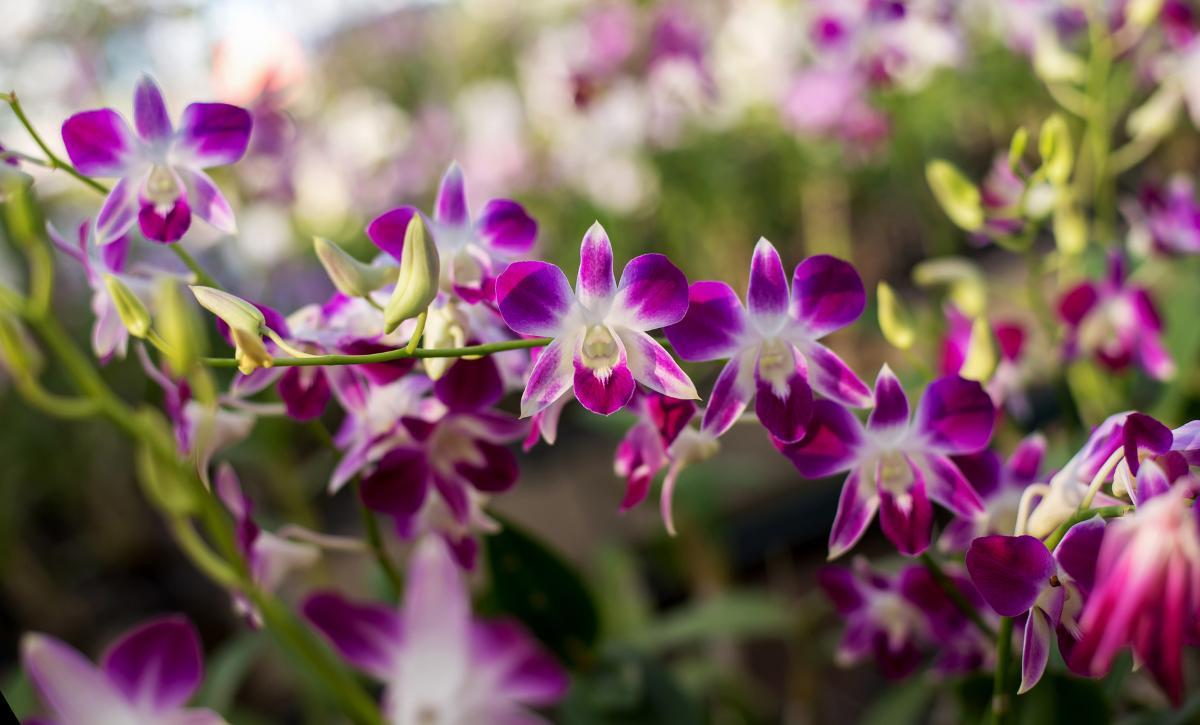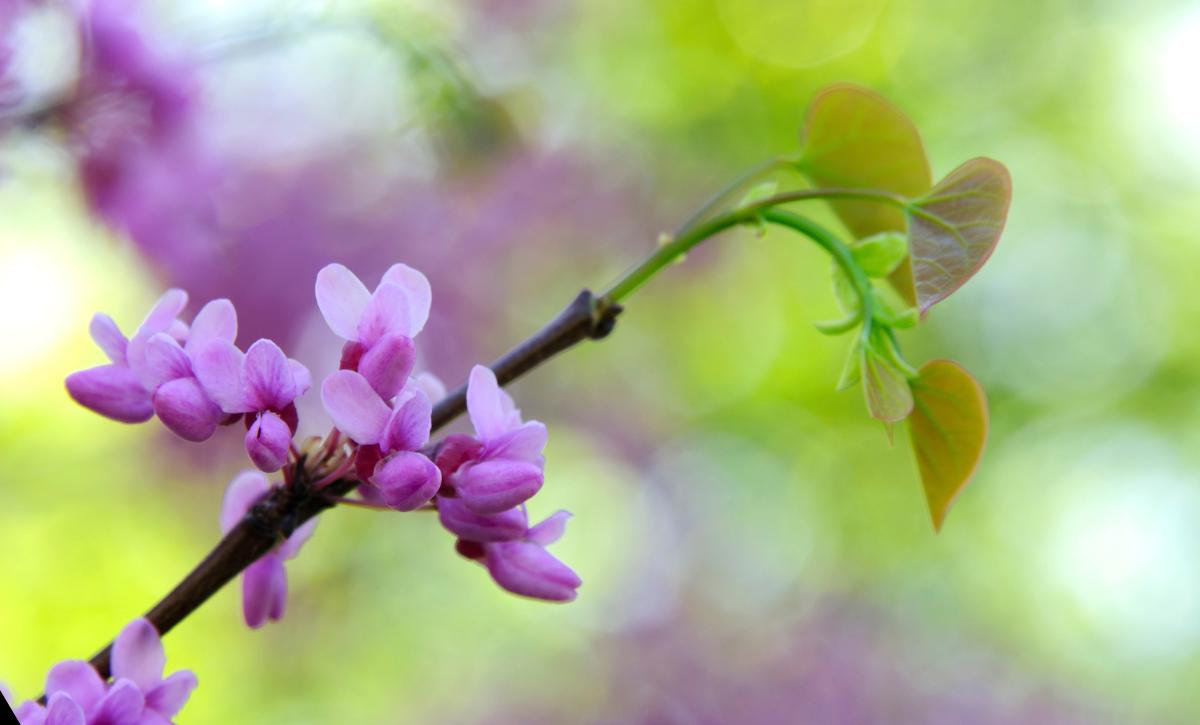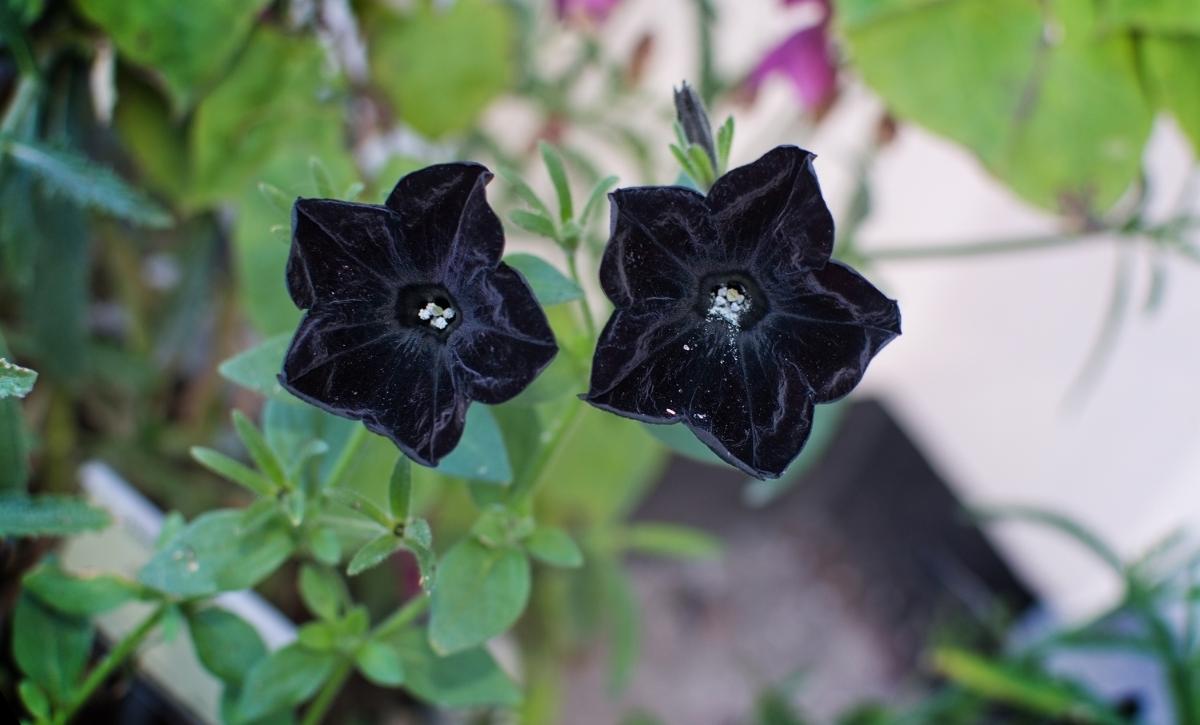Sometimes, gardening can be very consuming, so having a few low-maintenance shrubs and trees in your landscape is always nice. These plants look healthy and beautiful even when you neglect them or when there are poor weather conditions.
Shrubs are excellent foundational plants that pave the way for your garden’s more showy, smaller, high-maintenance plants.
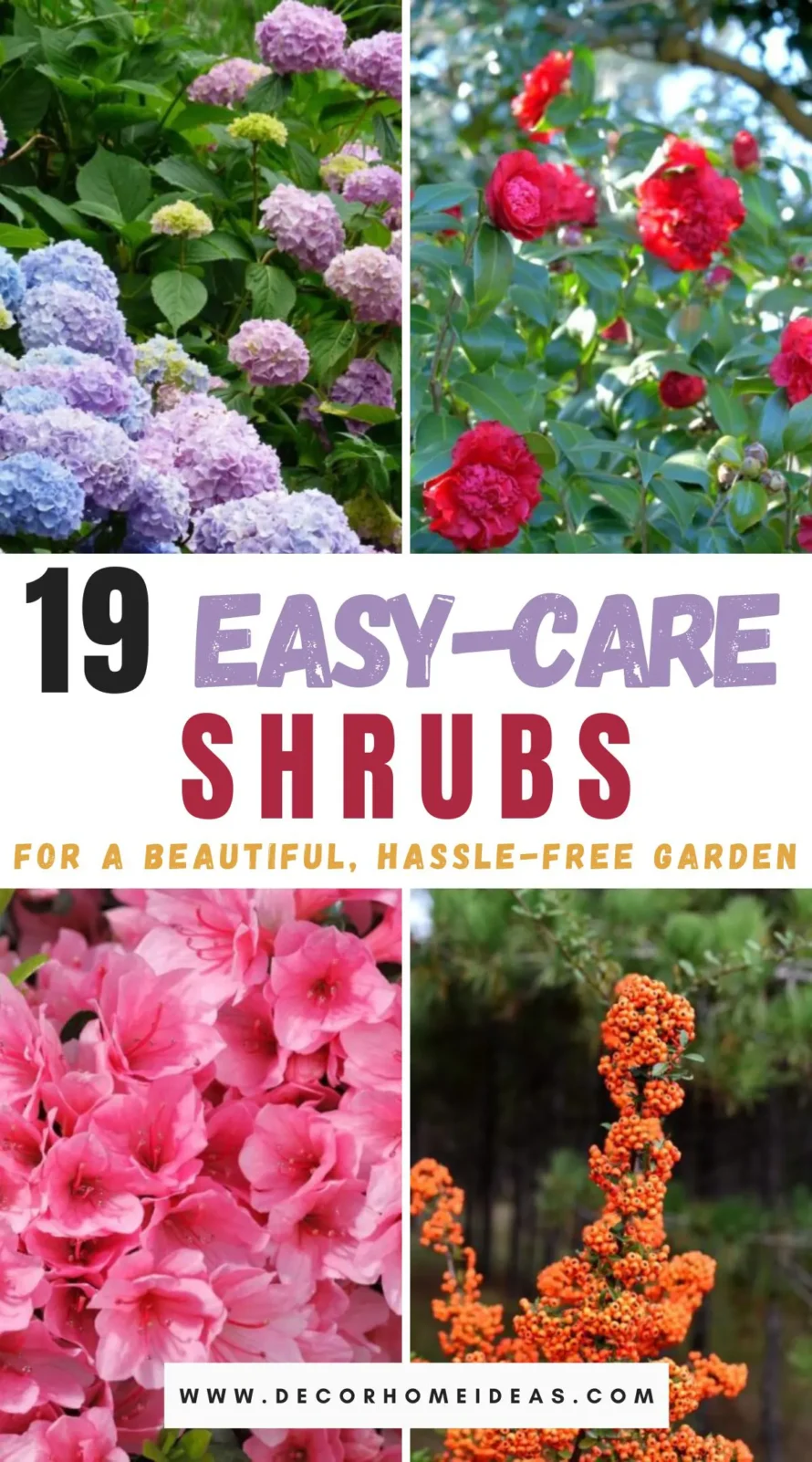
Since they can take up a significant amount of space, it’s best to find a variety that doesn’t need much tending.
Create a private outdoor living space, buffer noise, or block wind with the following 19 low-maintenance shrubs. Whether deciduous or evergreen with loose or dense growth, these shrubs offer a range of textures, and some even have showy flowers or berries.
Take a look!
1. Arborvitae
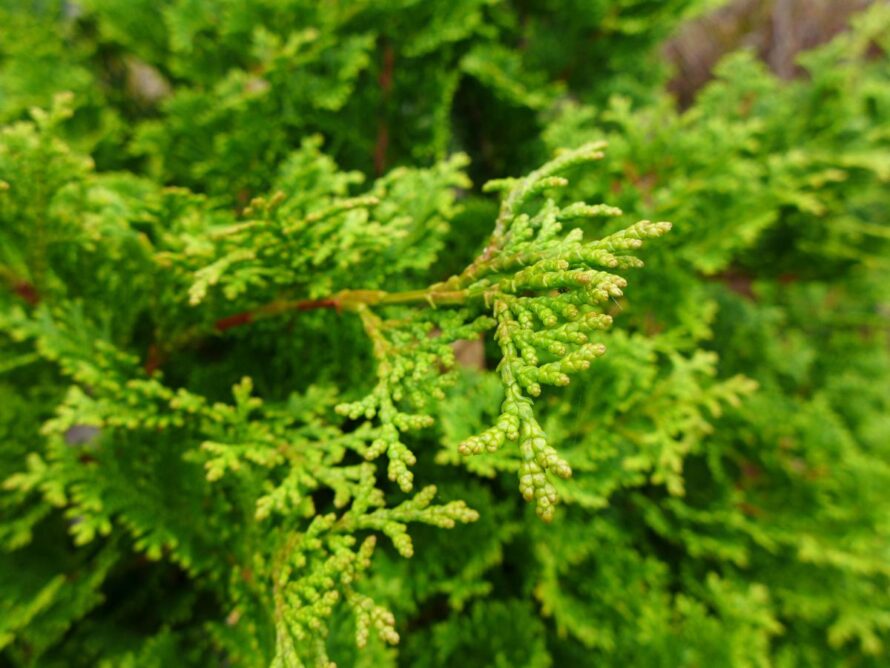
| Scientific name: | Thuja spp. |
| Soil requirements: | Well-drained, moist, loam, clay |
| Sun exposure: | Full, partial |
| USDA growing zones: | 2 – 8 |
Whenever you hear “arborvitae,” you probably picture huge, immense greenery gracing the edge of a driveway. Arborvitae has scale-like, flat sprays and aromatic, yellow-green to green foliage.
While some varieties of arborvitae can make for an excellent privacy screen, others are more shrublike and rounded in form; ultimately, it’s your choice on the look you want your hedge to have.
2. Boxwood
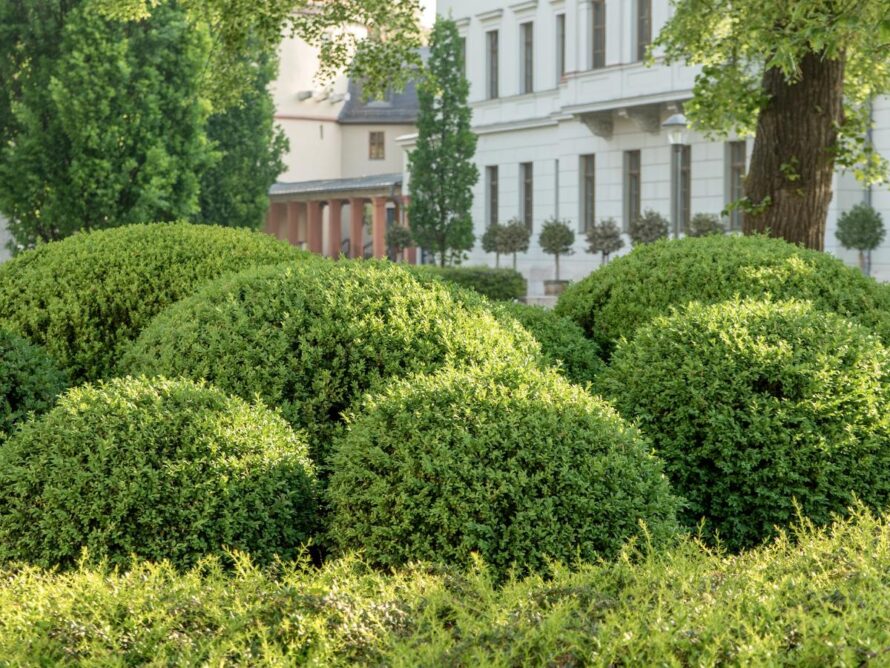
| Scientific name: | Buxus spp. |
| Soil requirements: | Well-drained, sand or loam, evenly moist |
| Sun exposure: | Partial |
| USDA growing zones: | 4 – 9 |
Setting the standard for formal clipped hedge plants, these versatile evergreen shrubs have small, dense leaves that can endure frequent shearing and shaping into sculptural or geometric forms.
Boxwoods are also popular border plants, making for excellent classic formal gardens with low parterres that separate plant beds and create pathways.
Taller varieties can create a dense living wall, which you can use to hide unsightly spots. You can also leave it unpruned to take its natural shape.
3. Abelia
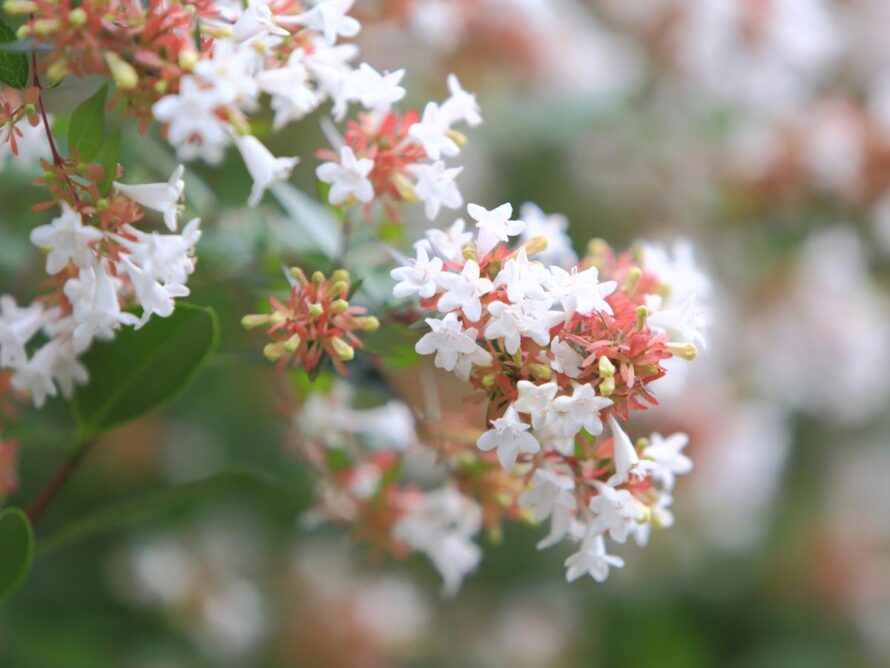
| Scientific name: | Abelia |
| Soil requirements: | Well-drained, moist, rich, loamy |
| Sun exposure: | Full, partial |
| USDA growing zones: | 4 – 10 |
Depending on where you live, Abelia shrubs can be evergreen or semi-evergreen. Abelias have dark green leaves and sweetly scented flowers that bloom from spring through fall.
They do well in most soil types but can lose their leaves in colder climates during winter.
Even though Abelias are drought tolerant, you need to water them during extended periods of high temperatures.
4. Inkberry Holly
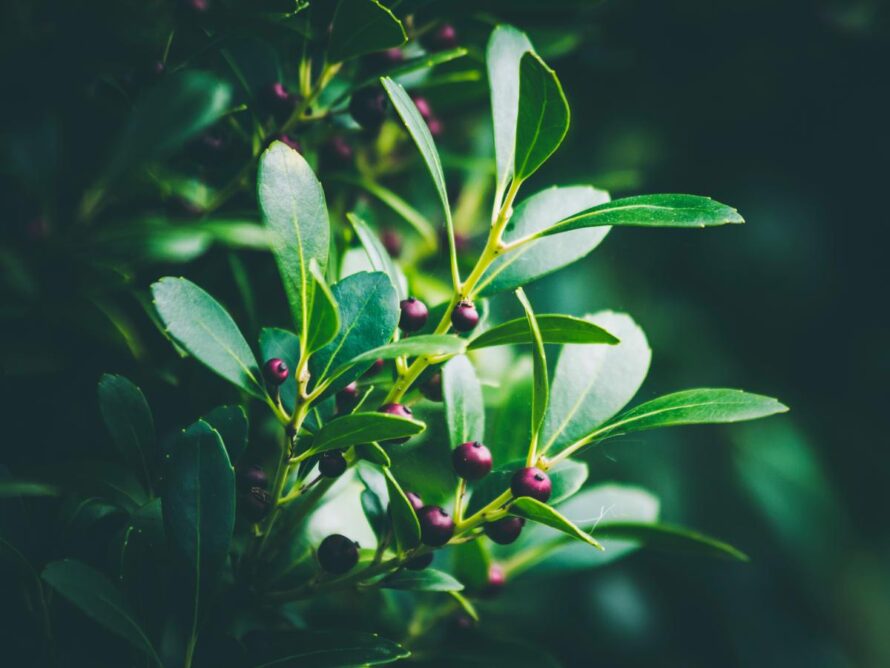
| Scientific name: | Ilex glabra |
| Soil requirements: | Moist, sandy or loam |
| Sun exposure: | Full, partial |
| USDA growing zones: | 5 – 9 |
Inkberry holly is a broad-leaf evergreen that boasts whitish-green flowers in spring before the dark berries that are responsible for its name appear during late summer and early fall.
This smooth-leaved cousin of the Christmas-style holly can grow up to 10 feet high, making it excellent for a privacy screen.
Very little pruning is required, and you should maintain its lush appearance by watering it regularly during droughts.
5. Juniper
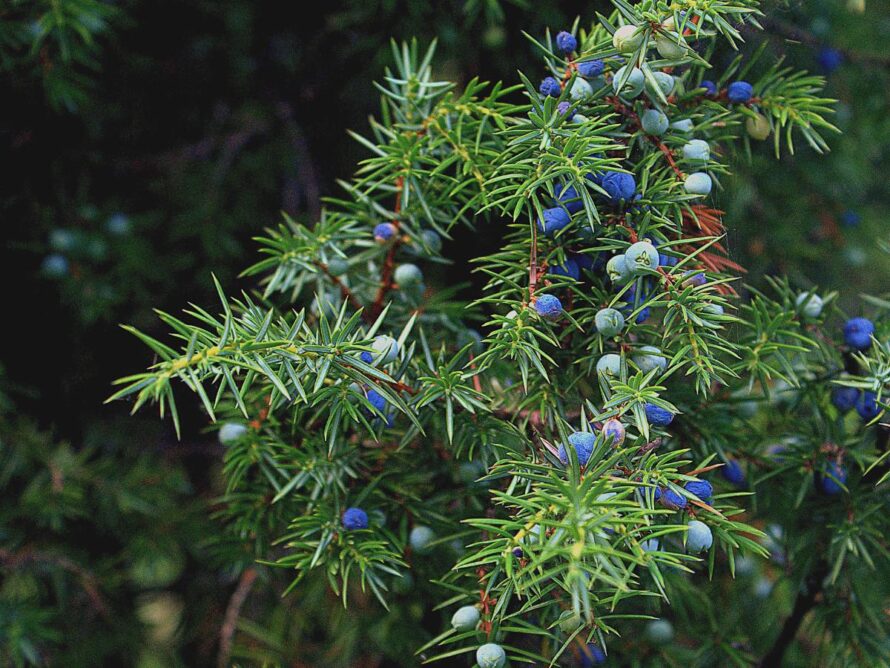
| Scientific name: | Juniper spp. |
| Soil requirements: | Well-drained, sandy, rocky, dry to moist |
| Sun exposure: | Full |
| USDA growing zones: | 2 – 9 |
Junipers are small conifers famous for their lovely evergreen leaves and berries.
They are some of the most versatile evergreens, ranging from creeping plants to mounded shrubs and upright trees.
So, whether you want a fast-growing tall tree for your garden privacy screen or a steely blue groundcover, junipers won’t disappoint. They respond well to pruning and are, hence, beneficial hedge plants.
6. Privet
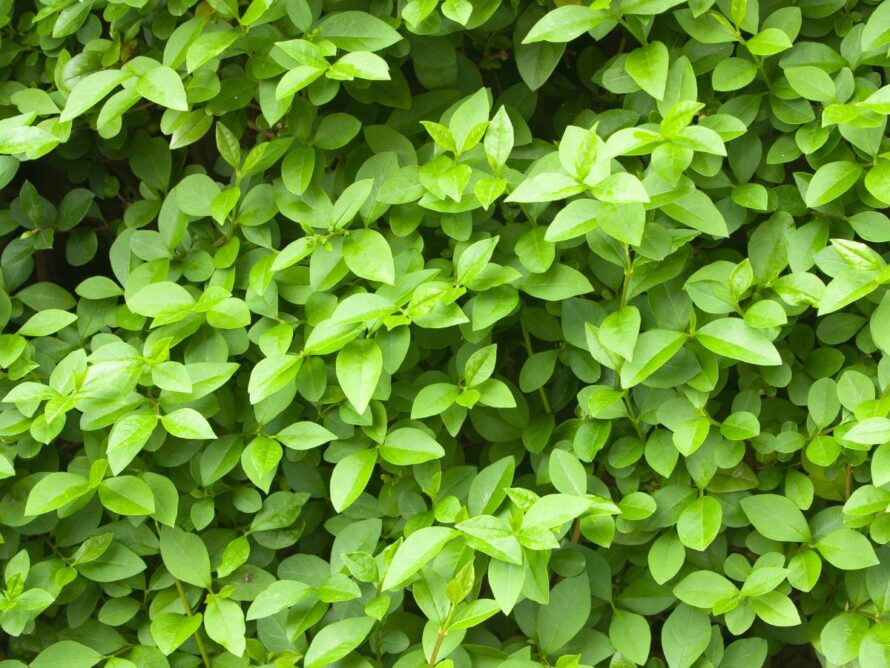
| Scientific name: | Ligustrum |
| Soil requirements: | Well-drained |
| Sun exposure: | Full, partial |
| USDA growing zones: | 3 – 8 |
Ligustrums are very low-maintenance plants mainly grown as hedges but can be pruned into any desired form.
They do well in almost any soil type and can be grown as foundation plants or in containers. Clusters of sweet-smelling white flowers bloom in spring or summer before blue-black berries emerge.
Since their seedlings grow easily, you may need to control their spread. Plant your privets in a sunny spot for the brightest leaf color.
Although they’re evergreen, ligustrums can lose their leaves in colder climates.
7. Hybrid Yews
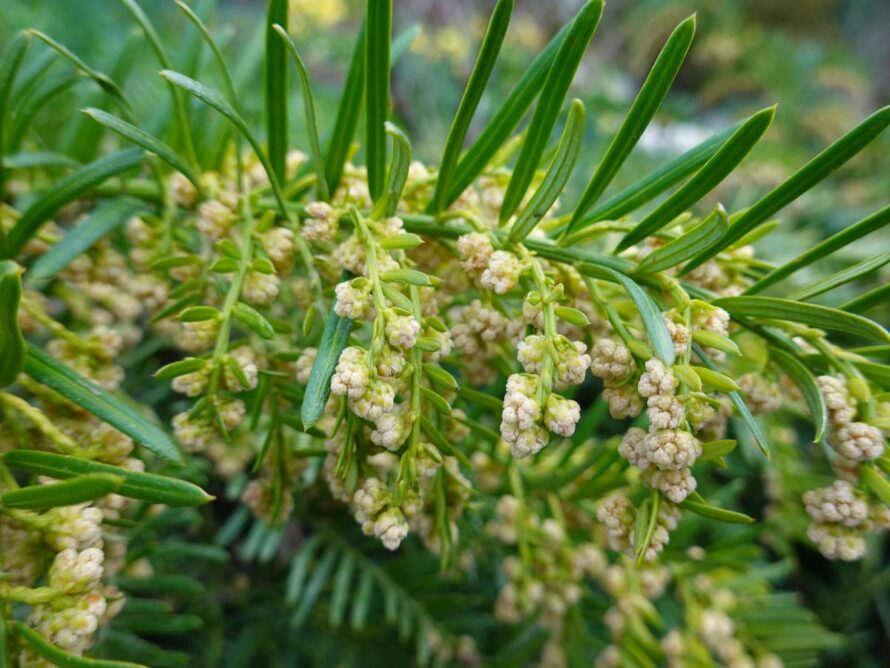
| Scientific name: | Taxus spp. |
| Soil requirements: | Well-drained, medium moist |
| Sun exposure: | Full, partial |
| USDA growing zones: | 4 – 7 |
Hybrid yews are known for their upright growth and possess the winter hardiness of Japanese yews and the ornamental excellence of English yews (pictured).
These versatile evergreen shrubs are less prone to pests and diseases, making them excellent hedge plants as long as the soil has proper drainage.
Regular shearing isn’t an issue for hybrid yews, making them popular for topiaries and formal hedges. You need to protect your plant from deer, particularly in winter.
8. Viburnum
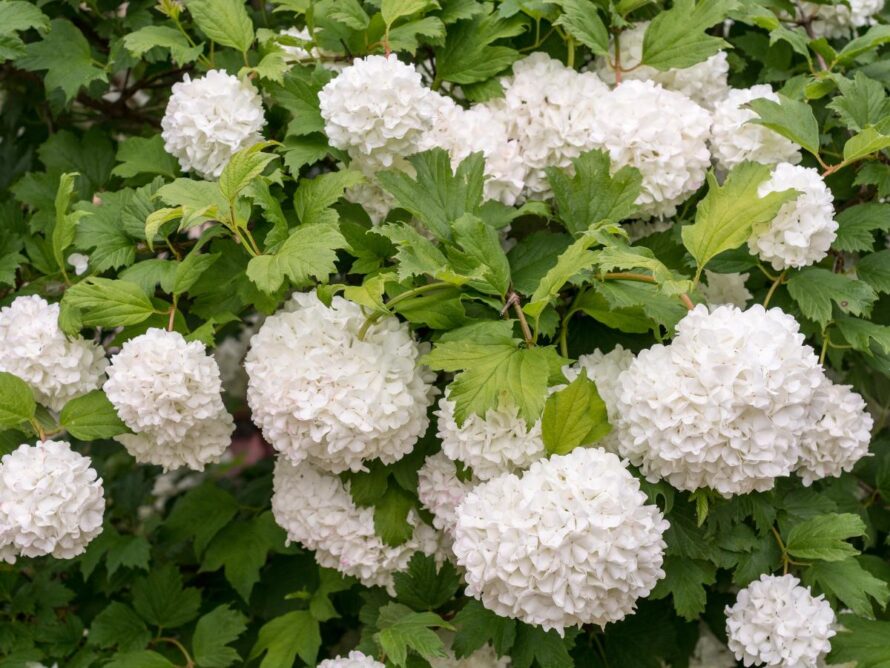
| Scientific name: | Viburnum spp. |
| Soil requirements: | Well-drained, moist |
| Sun exposure: | Full, partial |
| USDA growing zones: | 2 – 10 |
Viburnums are popular landscaping shrubs, mainly coveted for their slender, glossy foliage and white flower clusters.
Some types, like Viburnum macrocephalum (Chinese Snowball Viburnum), are semi-evergreen, while others, such as Viburnum japonicum and Viburnum davidii, are evergreen.
You can notice butterflies flying around their fragrant spring flowers while their fruit attracts birds. They adapt to most soil types; some can be trained as small trees.
9. Hydrangea
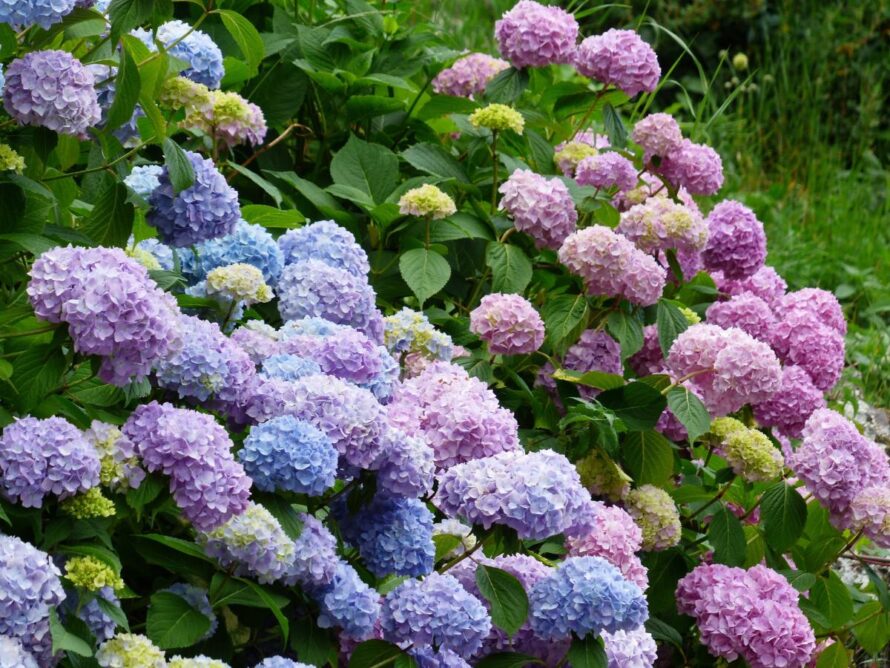
| Scientific name: | Hydrangea spp. |
| Soil requirements: | Well-drained, moist |
| Sun exposure: | Full, partial |
| USDA growing zones: | 3 – 8 |
Once established, hydrangeas require only a little pruning in spring. They are usually easy-to-grow, deciduous, flowering shrubs with a massive bouquet of flowers varying from lacecap to mophead types.
Their stunning blooms attract butterflies and will adorn your garden from summer to fall, and these creamy white flowers will look good even after they’ve faded.
Some recommended varieties include the prominent ‘Snow Queen’ hydrangea or ‘Munchkin’ hydrangea. Knowing the perfect time to prune your preferred variety’s stems would be best to ensure the most beautiful-looking summer blooms.
10. Camellia
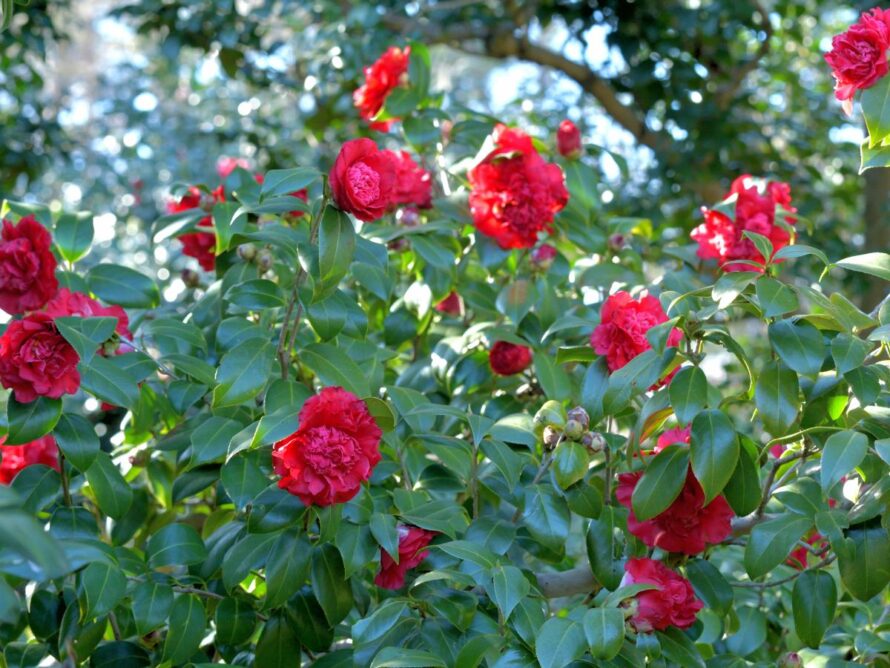
| Scientific name: | Camellia spp. |
| Soil requirements: | Well-drained, sand, loam, clay |
| Sun exposure: | Full, partial |
| USDA growing zones: | 7 – 9 |
The large, showy flowers of camellias will be most welcome in your garden, whether you grow C. japonica, which blooms in late winter or early spring, or C. sasanqua, which blooms in late fall.
Sasanqua camellias do well in most soil types and are more tolerant of full sun, while Japanese camellia prefers rich, acidic soil and partial sun.
You can shape your camellia by pruning; alternatively, leave it to grow to the size of a small tree.
11. Azalea
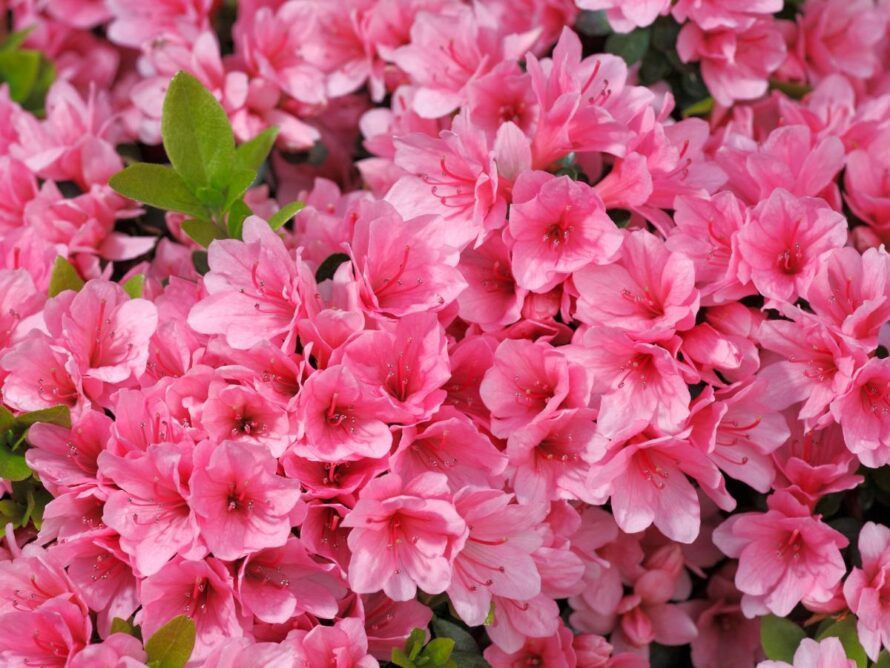
| Scientific name: | Rhododendron spp. |
| Soil requirements: | Moist, well-drained, loamy, sandy, organically rich |
| Sun exposure: | Partial, dappled |
| USDA growing zones: | 6 – 10 |
When azaleas burst into flower, it’s an indication that spring is around the corner. Evergreen hybrids are the most commonly grown azaleas, with white or pink trumpet-shaped flowers.
There are varieties that can bloom in three seasons, such as Encore azaleas. Once established, which happens very fast, azaleas require very little care.
Although most azaleas can be grown in hardiness zones 6 – 8, numerous new cultivars will also thrive in zones 9 and 10.
12. Chinese Fringe Flower
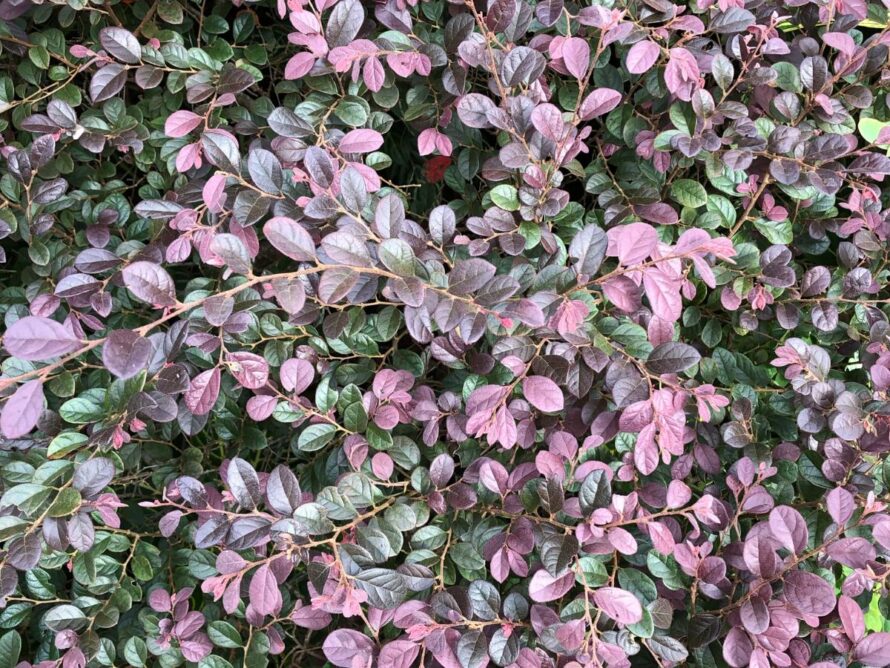
| Scientific name: | Loropetalum chinense |
| Soil requirements: | Moist, well-drained, organically rich |
| Sun exposure: | Full, partial |
| USDA growing zones: | 7 – 9 |
Loropetalum chinense is adored for its attractive foliage and fluttery, early spring blooms. The leaves can be variegated and often in lime or plum shades.
Most cultivars of these arching, multi-stemmed shrubs grow to about 6 feet tall and wide. They thrive in full sun but will appreciate some shade in the afternoon.
13. Distylium
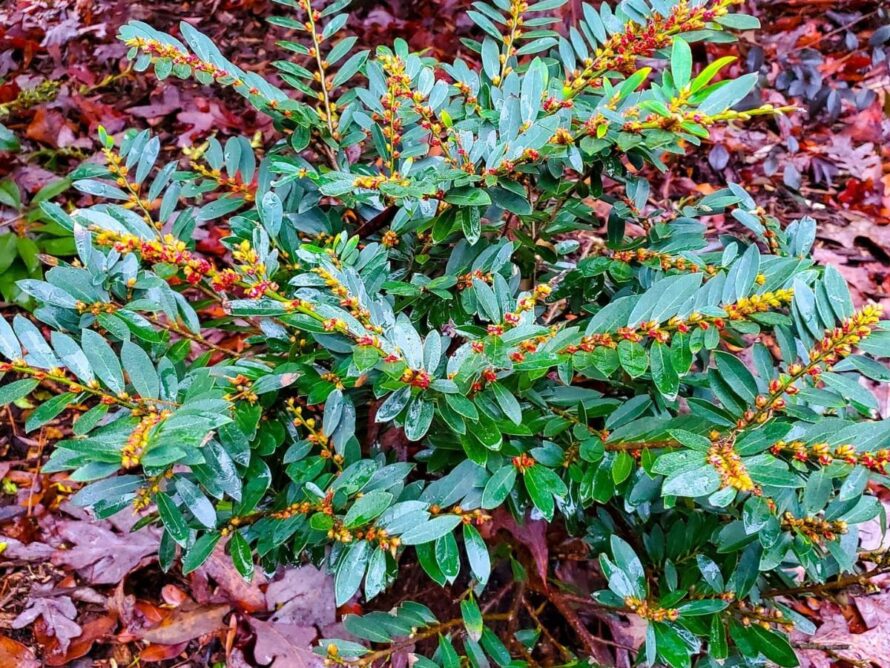
| Scientific name: | Distylium spp. |
| Soil requirements: | Moisty, sandy loam |
| Sun exposure: | Full, partial |
| USDA growing zones: | 7 – 9 |
Distylium is a very versatile plant that can serve as an alluring screen, filler, backdrop, or border.
It is disease-resistant, compact, heat—and drought-tolerant—everything you could ask for in an evergreen shrub!
Most varieties need little pruning, but tip pruning is ideal for making them lovely and bushy.
14. Korean Lilac
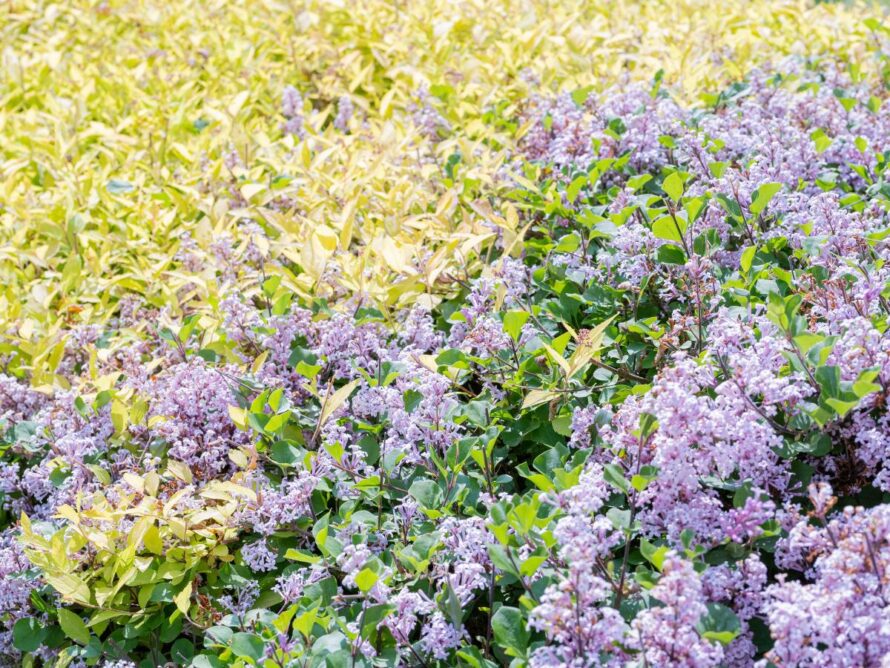
| Scientific name: | Syringa meyeri |
| Soil requirements: | Well-drained, moist |
| Sun exposure: | Full sun |
| USDA growing zones: | 3 – 7 |
Also known as the Meyer lilac, Syringa meyeri is one of the easiest lilacs to grow. This deciduous shrub’s fragrant purple blooms cover it in May. The Korean lilac resists the common plant disease known as powdery mildew and is one of the few lilacs that remains under 10 feet. It would help to prune it immediately after it flowers since the shrub blooms on the previous year’s stems; this will ensure an excellent floral hedge plant the following year.
15. Spirea
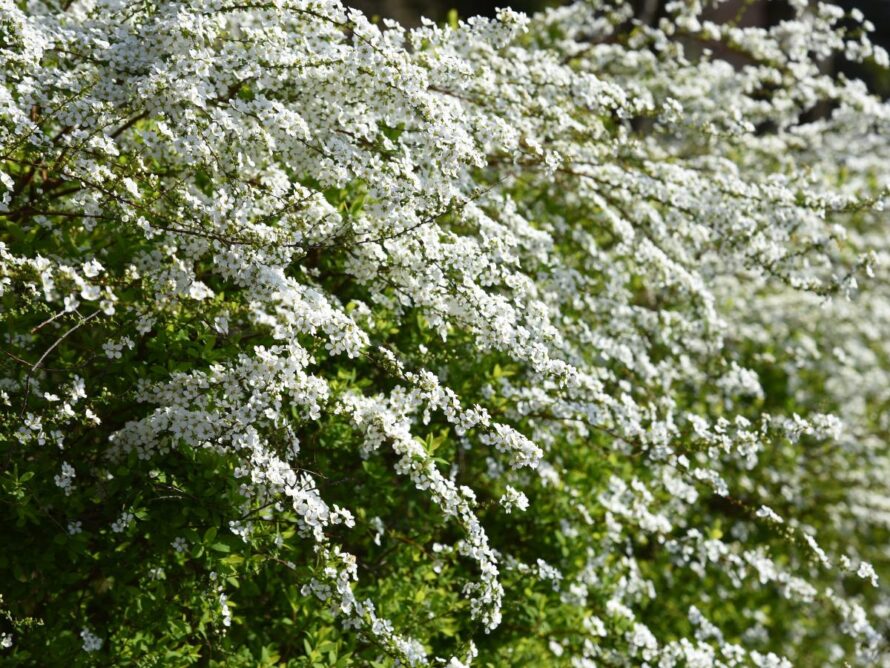
| Scientific name: | Spiraea spp. |
| Soil requirements: | Well-drained, moist |
| Sun exposure: | Full sun |
| USDA growing zones: | 3 – 8 |
Spirea are deciduous shrubs that grow densely, making them perfect privacy hedge plants. They are characterized by pink or white spring blooms and fine-textured foliage.
Bridal wreath spirea (Spirea prunifolia) is a popular variety used in landscaping. During spring, its long, trailing branches arch toward the ground and are covered in tiny, delicate blooms before the leaves sprout.
The leaves change color in autumn, mostly turning purple and golden-orange.
16. Hinoki Cypress
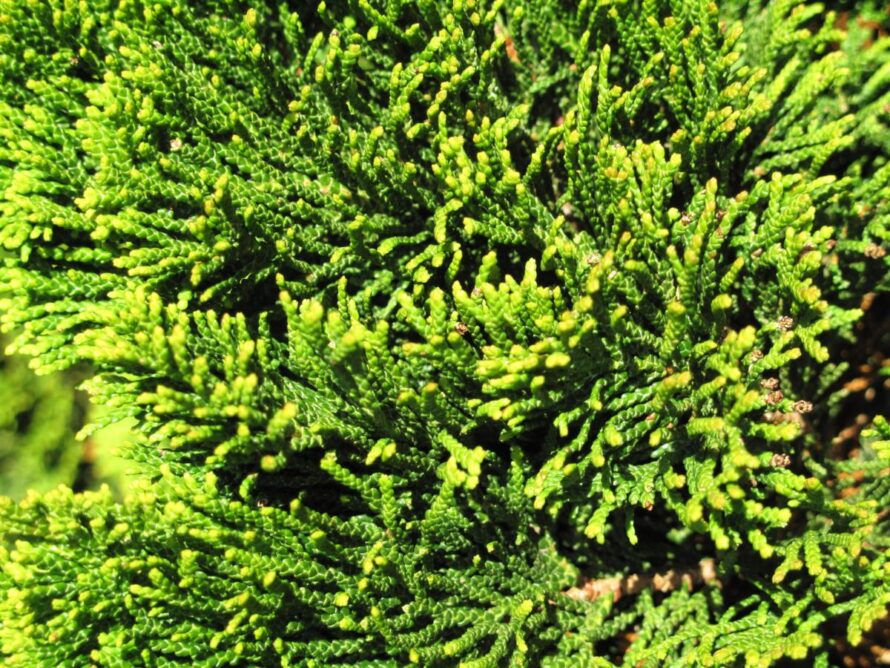
| Scientific name: | Chamaecyparis obtusa |
| Soil requirements: | Well-drained, sandy, loam, medium moisture |
| Sun exposure: | Full sun |
| USDA growing zones: | 5 – 8 |
Chamaecyparis obtusa is a Japanese variety with long, drooping branches that give it a weeping quality.
It’s technically a tree (just like most cypresses), but you can trim it to keep it lower to the ground and grow it as a shrub.
The full-sized plant is mainly used as a privacy screen, while its dwarf form is ideal as a bonsai. Hinoki cypress has excellent drought tolerance once established and gorgeous foliage.
17. Tea Olive
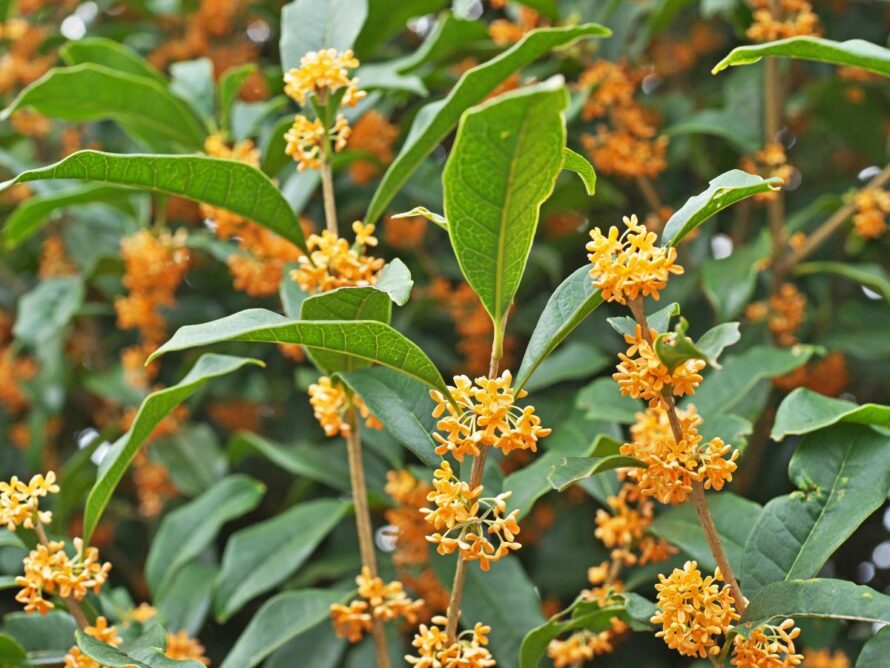
| Scientific name: | Osmanthus fragrans |
| Soil requirements: | Well-drained, moist |
| Sun exposure: | Full, partial |
| USDA growing zones: | 8 – 11 |
As classic as a camellia, the tea olive’s small white blooms and glossy leaves make it very alluring; however, its strong apricot fragrance is what this plant is well-known for.
The tea olive blooms in spring, summer, and periodically throughout the year and can be grown as a shrub or a small tree. If you live in the southern part of America, this vast shrub is a must-have in your garden!
18. Scarlet Firethorn
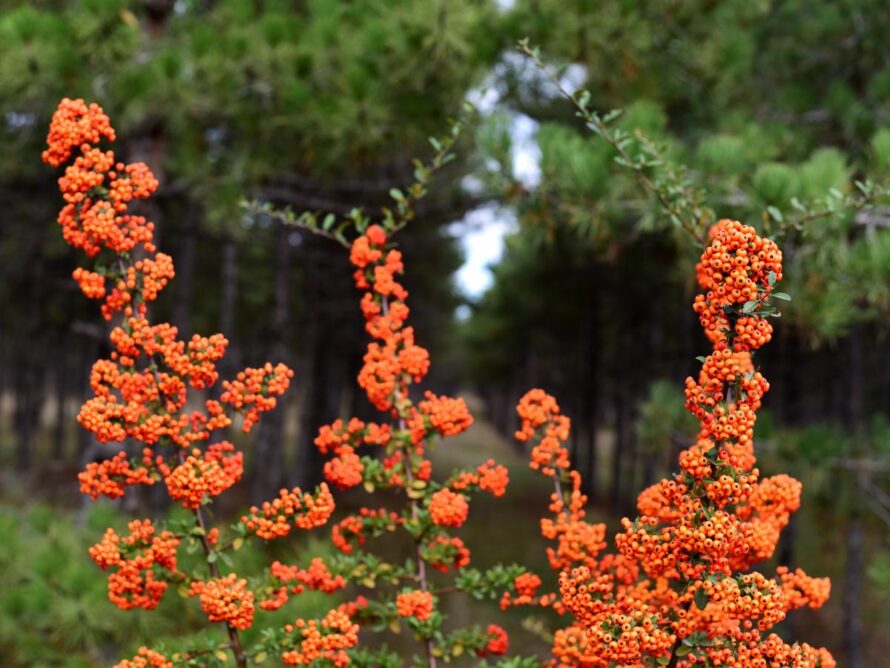
| Scientific name: | Pyracantha coccinea |
| Soil requirements: | Well-drained, dry to medium moist |
| Sun exposure: | Full, partial |
| USDA growing zones: | 6 – 9 |
The scarlet firethorn is deciduous in colder climates but evergreen in mild regions. It’s characterized by bright white flowers in spring and red-orange berries in summer.
The plant has stiff, thorny branches that adapt nicely to being trained as an informal hedging plant or an espalier.
19. Indian Hawthorn
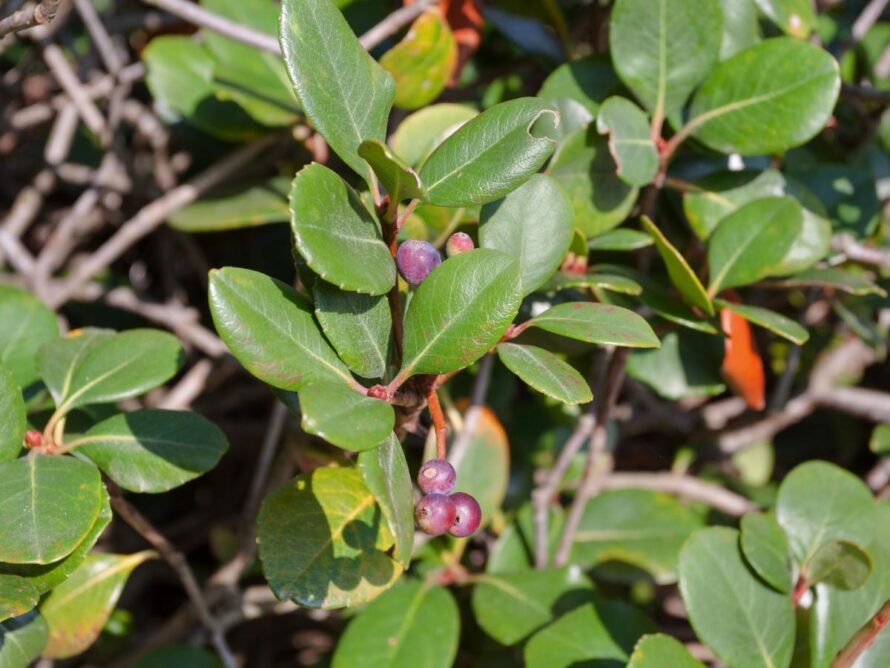
| Scientific name: | Rhapiolepsis indica |
| Soil requirements: | Well-drained |
| Sun exposure: | Full sun |
| USDA growing zones: | 8 – 10 |
Indian hawthorn is a low-maintenance Asian native that grows slowly, reaching a height of 3 – 6 feet tall.
The plant has oblong leaves with serrated edges and glossy, leathery texture, which are bronze when young but turn dark green as they age.
Rhapiolepsis indica has clusters of small, star-shaped pink or white fragrant flowers that bloom at the ends of branches during spring.


